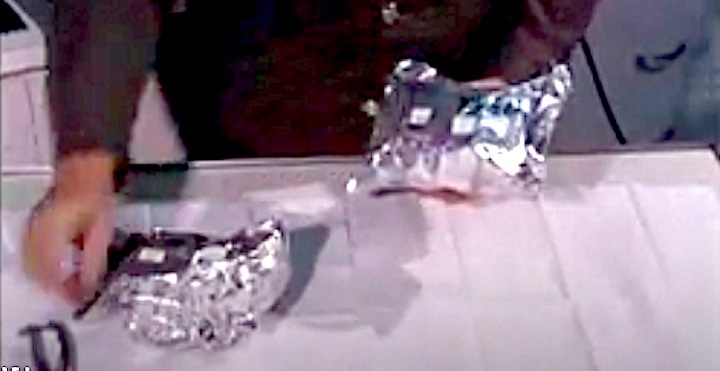5.09.2019

Spoiler alert: The man who cracks into the package of space-ready, bite-size cheese sandwiches does not taste one of the sickly, orange-and-white delicacies. Nor does he brave a "strawberry cube." Whatever that is.
It's hard to blame him, but it's still fascinating to watch his meditative process laying out a complete space meal. (Also included: "orange drink," potato salad, beef with vegetables and chewing gum that, incredibly, looks even less appetizing than the strawberry cubes.)
That footage is just part of one of the dozens of NASA clips that the National Archives hopes to make more accessible to researchers, professional and amateur alike, through one of the projects the administration dubs Citizen Archivist Missions. These missions ask volunteers across the U.S. to tag digital files in the archives' collection.
"Our big challenge is how do we make those records available to people, how do we make it more accessible?" Meredith Doviak, a community manager for the National Archives Catalog, told Space.com. "We were hoping that people could take a look at the films and if they have knowledge of NASA, they have knowledge of the astronauts or equipment or machinery, they could tag what they're seeing in those films and add it to our catalog."
To take part, people need to set up a free account with the National Archives and get familiar with the basics of tagging. Then, the entire digitized collections of the archives are your oyster. Volunteers can transcribe photographs of typed pages into searchable text or tag files with relevant keywords.
Those keywords then become searchable, so that someone looking for materials relating to astronaut Michael Collins, for instance, can find as many relevant results as possible. "It's going to unlock that film to researchers," Suzanne Isaacs, another community manager at the National Archives, told Space.com.
The footage is not all unappetizing space food. Other scenes include the first press conference of the crew of Apollo 1, views out the window of Gemini 7 and footage of a technician carefully unwrapping a moon rock the size of a potato swaddled in what looks like aluminum foil.
"There's also one of Michael Collins. It's maybe like a 10-minute film just watching him study … he's looking through a textbook and taking notes, and it's very relaxing and kind of soothing to watch," Doviak said. "It's really important to see the behind the scenes."
It's precisely those moments that the National Archives wanted to highlight in the spaceflight Citizen Archivist Mission, offering a more complete vision of this era of NASA than we might see in documentaries. "That's what's really interesting about these films — they're unedited and just the volume [of material]," Carol Swain, who works with the motion picture division of the archives, told Space.com. "When you see what they had to do, it's really amazing."
Although the citizen archivist project has gathered some select footage into the project, everything currently in the facility's digital catalog can be tagged, and the National Archives is always working to digitize more material. "People like to be inspired. They like us to give them suggestions of things that they can work on, and that's where these missions come in," Isaacs said. "We don't want people to think that once this is done, that's all we have for them. There's lots more."
The complete list of current Citizen Archivist Missions is available on the National Archives website, as are instructions for creating an account and getting started with a project.
Tagging is particularly helpful if volunteers have some specific knowledge related to the contents of the files and can flesh out what the archives already know about those subjects. After all, the staff at the National Archives are archivists, not spaceflight historians, and the footage itself belongs to everyone.
"The people who are the experts on the records are the people who lived through that time or can contribute their memory or their knowledge of the event," Doviak said.
"By contributing, I think people start to understand that these are their records too, that the National Archives is protecting them and providing access to them, but they belong to the world," Isaacs added.
After all, everyone deserves to see how unappetizing space food can be.
Quelle: SC
